#article: 1890s
Explore tagged Tumblr posts
Text
About the entanglement of "science" and Empire. About how children are encouraged participate in these imperial "scripts".
Was thinking about this recent thing:

The caption reads: "Toys and board games, 1940." And I think the text on the game-box in the back says something like "the whole world is yours", maybe? (Use of appeals to science/progress in imperial narratives is a thing already well-known, especially for those familiar with Victorian era, Edwardian era, Gilded Age, early twentieth century, etc., in US and Europe.)
And was struck, because I had also recently gone looking through other posts about the often-strange imagery of children's material in late nineteenth- and early twentieth-century US/Europe. And was disturbed/intrigued by this thing:
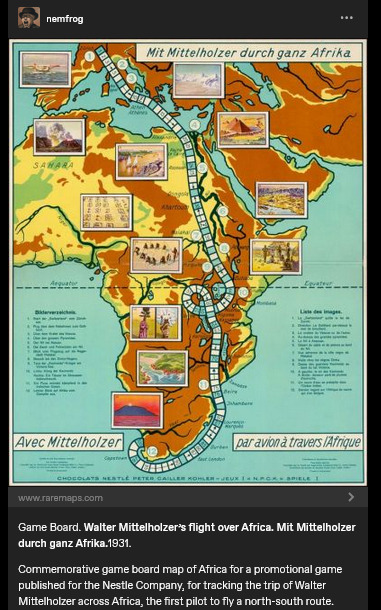
Caption here reads: "Game Board. Walter Mittelholzer's flight over Africa. [...] 1931. Commemorative game board map of Africa for a promotional game published for the N*stle Company, for tracking the trip of Walter Mittelholzer across Africa, the first pilot to fly a north-south route."
Hmm.
I went to learn more about this: Produced in Switzerland. "Africa is for your consumption and pleasure. Brought to you by the N#stle Company!" (See the name-dropping of N#stle at the bottom of the board.) A company which, in the preceding decade, had shifted focus to expand its cacao production (which would be dependent on tropical plantations). Adventure, excitement, knowledge, science, engineering prowess, etc. For kids! (In 1896, Switzerland had hosted a "human zoo" at the Swiss Second National Exhibition in Geneva, where the "Village Noir" exhibit put living people on display; they were over two hundred people from Senegal, who lived in a "mock village" in Geneva's central square.)
Another, from a couple decades earlier, this time English-language.
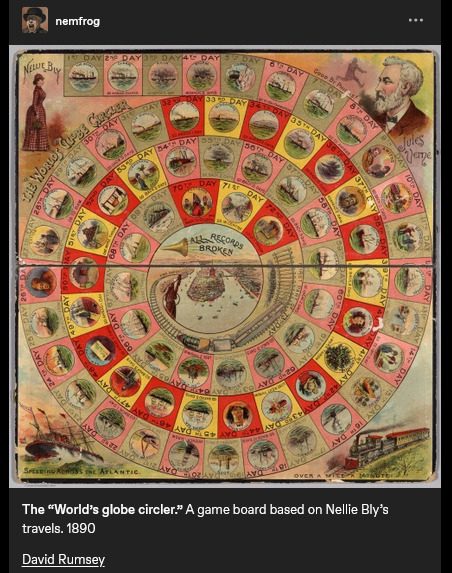
Caption reads: "The "World's globe circler." A game board based on Nellie Bly's travels. 1890." At center, a trumpet, and a proclamation: "ALL RECORDS BROKEN".
Went to find more info: Lithographed game board produced in New York. Images on the board also show Jules Verne; Bly, in real-world travels, was attempting to emulate the journey of the character Phileas Fogg in Verne's Around the World in Eighty Days (1872).
Game produced in the same year that the United States "closed the frontier" and conquered "the Wild West" (the massacre at Wounded Knee happened in December 1890). A couple years later, the US annexed Hawai'i; by decade's end, the US military was in both Cuba and the Philippines. The Scramble for Africa was taking place. At the time, Britain especially already had a culture of "travel writing" or "travel fiction" or whatever we want to call it, wherein domestic residents of the metropole back home could read about travel, tourism, expeditions, adventures, etc. on the peripheries of the Empire. Concurrent with the advent of popular novels, magazines, mass-market print media, etc. Intrepid explorers rescuing Indigenous peoples from their own backwardness. Many tales of exotic allure set in South Asia. Heroic white hunters taking down scary tigers. Elegant Englishwomen sipping tea in the shade of an umbrella, giggling at the elephants, the local customs, the strange sights. Orientalism, tropicality, othering, paternalism, etc.
I'd lately been looking at a lot of work on race/racism in British scientific and pop-sci literature involving natural history or geographical imaginaries. (From scholars like Varun Sharma, Rohan Deb Roy, Ezra Rashkow, Jonathan Saha, Pratik Chakrabarti.) But I'd also lately been looking at Mashid Mayar's work, which I think closely suits this kinda thing with the board games. Some of her publications:
"From Tools to Toys: American Dissected Maps and Geographic Knowledge at the Turn of the Twentieth Century". In: Knowledge Landscapes North America, edited by Kloeckner et al., 2016.
"What on Earth! Slated Globes, School Geography and Imperial Pedagogy". European Journal of American Studies 16, number 3, Summer 2020.
Citizens and Rulers of the World: The American Child and the Cartographic Pedagogies of Empire, 2022.
Discussing her book, Mayar was interviewed by LA Review of Books in 2022. She says:
[Quote.] Growing up at the turn of the 20th century, for many American children, also meant learning to view the world through the lens of "home geography." [...] [T]hey inevitably responded to the transnational whims of an empire that had stretched its dominion across the globe [recent forays into Panama, Cuba, Hawai'i, the Philippines] [...]. [W]hite, well-to-do, literate American children [...] learned how to identify and imagine “homes” on the map of the world. [...] [T]he cognitive maps children developed, to which we have access through the scant archival records they left behind (i.e., geographical puzzles they designed and printed in juvenile periodicals) [...] mixed nativism and the logic of colonization with playful, appropriative scalar confusion, and an intimate, often unquestioned sense of belonging to the global expanse of an empire [...]. Dissected maps - that is, maps mounted on cardboard or wood and then cut into smaller pieces that children were to put back together - are a generative example of the ways imperial pedagogy [...] found its place outside formal education, in children's lives outside the classroom. [...] [W]ell before having been adopted as playthings in the United States, dissected maps had been designed to entertain and teach the children of King George III about the global spatial affairs of the British Empire. […] [J]uvenile periodicals of the time printed child-made geographical puzzles [...]. [I]t was their assumption that "(un)charted," non-American spaces (both inside and outside the national borders) sought legibility as potential homes, [...] and that, if they did not do so, they were bound to recede into ruin/"savagery," meaning that it would become the colonizers' responsibility/burden to "restore" them [...]. [E]mpires learn from and owe to childhood in their attempts at survival and growth over generations [...]. [These] "multigenerational power constellations" [...] survived, by making accessible pedagogical scripts that children of the white and wealthy could learn from and appropriate as times changed [...]. [End quote.] Source: Words of Mashid Mayar, as transcribed in an interviewed conducted and published by M. Buna. "Children's Maps of the American Empire: A Conversation with Mashid Mayar". LA Review of Books. 11 July 2022.
Some other stuff I'd recently put in a to-read list, specifically about European (especially German) geographical imaginaries of globe-as-playground:
The Play World: Toys, Texts, and the Transatlantic German Childhood (Patricia Anne Simpson, 2020) /// "19th-Century Board Game Offers a Tour of the German Colonies" (Sarah Zabrodski, 2016) /// Advertising Empire: Race and Visual Culture in Imperial Germany (David Ciarlo, 2011) /// Learning Empire: Globalization and the German Quest for World Status, 1875-1919 (Erik Grimmer-Solem, 2019) /// “Ruling Africa: Science as Sovereignty in the German Colonial Empire and Its Aftermath” (Andrew Zimmerman. In: German Colonialism in a Global Age, 2014) /// "Exotic Education: Writing Empire for German Boys and Girls, 1884-1914". (Jeffrey Bowersox. In: German Colonialism and National Identity, 2017) /// Raising Germans in the Age of Empire: Youth and Colonial Culture, 1871-1914 (Jeff Bowersox, 2013) /// "[Translation:] (Educating Modernism: A Trade-Specific Portrait of the German Toy Industry in the Developing Mass-Market Society)" (Heike Hoffmann, PhD dissertation, Tubingen, 2000) /// Home and Harem: Nature, Gender, Empire, and the Cultures of Travel (Inderpal Grewal, 1996) /// "'Le rix d'Indochine' at the French Table: Representation of Food, Race and the Vietnamese in a Colonial-Era Board Game" (Elizabeth Collins, 2021) /// "The Beast in a Box: Playing with Empire in Early Nineteenth-Century Britain" (Romita Ray, 2006) /// Playing Oppression: The Legacy of Conquest and Empire in Colonialist Board Games (Mary Flanagan and Mikael Jakobsson, 2023)
#mashid mayar book is useful also the Playing Oppression book is open access online if you want#in her article on slated globes mayar also mentions how european maps by 1890s provoked a sort of replete homogenous filling in of globe#where european metropole thought of itself as having sufficiently mapped the planet by now knit into neat web of interimperial trade#and so european apparent knowledge of globe provided apparently enlightened position of educating or subjugating the masses#whereas US at time was more interested in remapping at their discretion#a thing which relates to what we were talking about in posts earlier today where elizabeth deloughrey describes twentieth century US#and its aerial photographic and satellite perspectives especially of Oceania and Pacific as if it now understood the totality of the planet#ecologies#tidalectics#geographic imaginaries#mashid mayar#indigenous pedagogies#black methodologies#tigers and elephans#victorian and edwardian popular culture#my writing i guess
142 notes
·
View notes
Text



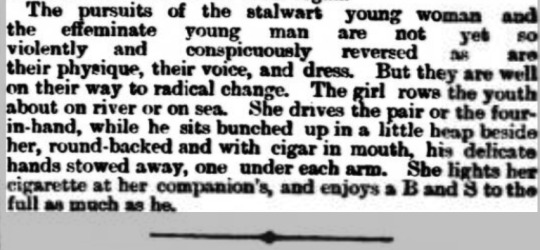
in love with this article from 1891 that attempts a cutting satire of the Woke Youth but only succeeds in a charming little account of a masc girl and a twink on a date. stalwart gf and effeminate bf sounds like the next hot new ship meme
(transcription in alt text)
#queer history#history#gender#me and who etc etc LMAO#i found this article on the british newspaper archive while researching a project a couple of years ago#thought about it often since and always vaguely meant to upload it here so finally i remembered to. we cheered#remembered about it because i mentioned it in the tags of an edwardian illustration that aims to poke fun at the same idea#that women are becoming manly and men are becoming womanly#late-victorian immaculate gender neuroses 101#but again it just depicts two androgynous people serving gender goals 😭#what gets me about this article is that it's not mean-spirited exactly but it is derisive#and yet it includes these cute little details like “he likes her to tease him about his bracelets”#like damn girl really. how did they meet. who fell first etc SJDAKASKJB#and not her engaging in the classic homosexual flirtation of lighting her cigarette against his??????#author i think you want your 1890s wojaks to kiss a little it's okay
22 notes
·
View notes
Text
friendship ended with the amuletverse families now the bonifay family is my best friend
SCPs in question: SCP 1890, SCP 1896, SCP 1928
#alt rambles#scp#scp foundation#amuletverse#scp 1928#scp 1890#scp 1896#someone on a discord server shared the link to the articles and now I'm actually really really hooked.
3 notes
·
View notes
Text
The Winchester 1890: Browning's First Pump Action Rifle
The Winchester 1890 pump action rifle was one of the first viable repeating rifles chambered in .22 rimfire and it singlehandedly created the gallery gun genre. But it started life almost as an afterthought. In early 1887, John Browning presented Winchester with plans for a pump action shotgun. This design would later become the Winchester 1893 and 1897 shotguns, but only a few years earlier, the…
0 notes
Text

The lives of a gay couple who lived in a Dorset village for nearly six decades have been turned into an exhibition. Norman Notley (1890–1980) and David Brynley (1902–1981) moved to Corfe Castle in 1923 and lived openly as a couple, despite homosexuality being illegal at the time. The two men were successful musicians who sang together in Britain and the United States and they had many friends in the art world. Photographs and diaries on display at Dorset Museum reveal they lived peacefully with the local community for 57 years until their deaths.

In 1973, local people organised an event for the couple to celebrate their 50 years in the village. Museum director Claire Dixon said: "They were known as 'the boys' quite affectionately by the community. "They didn't throw the party, the community threw it for them. "When lots of people were having to hide the fact that they were gay, or think about their behaviour in public space, it seems that they were able to live quite a peaceful life in the village." The couple shared a passion for creating art as well as collecting and Notley bequeathed his collection of paintings to Dorset Museum. Despite being able to live authentically, the only image in the collection of them being affectionate to one another is a photo of Brynley kissing Notley on the cheek.

Notley died in 1980, aged 90, and Brynley a year later, aged 81. Maisie Ball, an archaeology student at Bournemouth University, began digitising the couple's photographs and transcribing their journals and letters as part of a work placement at the museum. She said: "Being able to share their story has been so important as there are not many collections like this that give a glimpse into the lives of LGBTQ+ people from this time period. "The photographs that have stuck with me the most are the ones with their many dogs and the rare few of Norman on his own, where you get to see a glimpse of his personality." The display, curated by Ms Ball, with advice from Prof Jana Funke of the University of Exeter, is on display throughout February to coincide with LGBT+ History Month. (Full article)


#history#gay history#lgbt history#lgbtq history#gay#mlm#lgbt#lgbtq#lgbtqia#gay couple#gay love#dorset
2K notes
·
View notes
Text
(Short, truncated, but hopefully not reductive) Russian history lesson!!!
A perspective that needed to be beat into the dirt when I first started playing Pathologic was that the Bachelor was a city dandy and dandies inherently imply conservatism, which is a British Victorian ideal that has been described like this: "the upper classes were expected to affirm their masculinity through sexual distance, abstinence and self-control," a kind of "cerebral, self-denying asceticism" (Ashish Nandy, The Intimate Enemy; btw). The image of a well-dressed, well-spoken and educated man is found in a lot of core western texts - like Pride and Prejudice, where Darcy is in an ideologically conservative space because he's a part of a protective wealthy class.
But, you know, be careful that bias doesn't drip into your interpretation of Daniil Dankovsky, because his political and social positions are wildly different. The Victorian upper and upper-middle class were historically borne from an accumulation of luxuries brought in through global dominance and colonialism, which drove that subsection of people to the far right. Also, because of this wealth and national expansion, people were moving to cities (to London) in droves. England shifted from a rural to urban-based country. "By 1851 over half the population lived in settlements of 2,500 or more, peaking at around 80 per cent by the 1890s," according to an article by R J Davenport, just to give you some numbers.
Okay, but Russia? "87 percent of the population was rural when revolution broke out in 1905, and 85 percent still rural when it erupted again in 1917" (Dorothy Atkinson, Stats on the Russian Land Commune). Of the small percentage are the intelligentsia, educated people who went to college, which was at first dominated by nobles and then by the turn of the century was overrun by "commoners" (like Dankovsky, who in a monarchical society mostly made of peasants is still beneath high, noble classes)
From these commoners came liberal radicals, and from some of these liberal radicals came futurists. This is what Dankovsky is (Futurism/Utopianism. You see).

(Okay, Russian futurists are different from Italian futurists and there were many different types of Russian futurism, but everything came from Marinetti)
This revolution was running parallel to other cultural revolutions inside Russia, inside cities, and parallel to the Bolsheviks. But post-revolution, Lenin condemned the intelligentsia as the chaff between the proletariat and the bourgeoisie, in assistance to the bourgeoisie. So they are all summarily stomped asunder.
But this is where the Bachelor is! This is where he's coming from. And I think all modern Russian media that concerns itself with futurism or the culture surrounding 1917 is written with the inexorable knowledge that all of this Utopianism will be usurped by the USSR. Dankovsky may be doomed by the narrative but the narrative itself is doomed by history.
This is not in-depth at all, I'm sorry, but I hope it's serviceable.
#pathologic#daniil dankovsky#sorry also for the insane amount of posts ive made recently#i read the intimate enemy and my brain couldn't calm down#fingers crossed this is the last one#man-of-letters#pathologic 3
355 notes
·
View notes
Text

REMMICK X MEDIUM!READER - IN PROGRESS
To commune with the dead was second nature, as familiar to you as the back of your hand. Seances and ouija boards, psychometry and automatic writing - the tools of your trade. Little did you know what kind of creature would come to prey upon you in pursuit of your gifts, though...
Author's Note | I'm not an expert on the spiritualism movement in the 1800s. I've done research on the matter of spiritualism and it's relationship to race, as a lot of documents focus solely on white spiritualists/mediums. For those interested, I can share a list of some essays, papers, and articles I explored with the intention of writing spiritualism inclusively. Should anything in my work be not up to snuff in that regard, please do let me know! (my personal practice is witchcraft, so if any of that seeps in, I apologize!)
Warnings, Themes | 18+, fem reader, mature content, horror themes, 1890s northeastern setting, spiritualism (possible historical inaccuracies), various vampire lores used, canon typical blood/gore etc, cat-and-mouse vibes, slight use of 3rd person narrative
Taglist Info | Please make sure your mentions settings will allow me to tag you if you'd like to be added to the list.
!!! MINORS DNI !!!
chapter list
⛧ prologue
114 notes
·
View notes
Text
💢 Very interesting 🤔
LAW OFFICES OF AISSA WAYNE (John Wayne's Daughter) Obama's S.S. Number
For those of you who don't know but at the very bottom of this writing, the attorney who authored this article is John Wayne's daughter, Aissa Wayne, also a USC graduate.
Well, Well, Well, it looks like someone thoroughly checked into President Obama's Social Security number.
Jean Paul Ludwig or Barack Hussein Obama? S.S.N. #042-68-4425
WOW, read this, it's short - very interesting.
An intensive 6-year investigation has revealed the identity of the man whose Social Security Number (SSN) is being used by President Obama.
Jean Paul Ludwig, who was born in France in 1890, immigrated to the United States in 1924, and was assigned S.S.N. 042-68-4425 (President Obama's current SSN) rec'd on or about March 1977.
Mr. Ludwig lived most of his adult life in Connecticut. Because of that, his SSN begins with the digits 042, which are among only a select few reserved for Connecticut residents.
Barack H. Obama never lived or worked in that state! Therefore, there is no reason on earth for his SSN to start with the digits 042. None whatsoever!
Now comes the best part! J. P. Ludwig spent the final months of his life in Hawaii, where he died.
Conveniently, Obama's grandmother, Madelyn Payne Dunham, worked part-time in the Probate Office in the Honolulu, Hawaii Courthouse, and therefore had access to the SSNs of deceased individuals.
The Social Security Administration was never informed of Ludwig's death, and because he never received Social Security benefits there were no benefits to stop and therefore, no questions were ever raised.
The suspicion, of course, is that Dunham, knowing her grandson was not a U.S. Citizen, either because he was born in Kenya, or became a citizen of Indonesia upon his adoption by Lolo Soetoro, simply scoured the probate records, until she found someone, who died that was not receiving Social Security benefits, and selected Mr. Ludwig’ s Connecticut SSN for her grandson, Barry Obama.
Just wait until the head Birther himself, Donald Trump, gets past the birth certificate and onto the issue of Barry O's use of a stolen SSN. You will see leftist heads exploding, because they will have no way of Defending Obama.
---------------------------------------------------
Although many Americans do not understand the meaning of the term "natural born", there are few who do not understand that if you are using someone else's SSN it is a clear indication of fraud, and a federal offense.
If the voters of this great nation can succeed in bringing this lying, deceitful, cheating, corrupt, impostor to justice it will be the biggest and best news in decades for our country and the world.
"In God We Trust."
#pay attention#educate yourselves#educate yourself#knowledge is power#reeducate yourself#reeducate yourselves#think about it#think for yourselves#think for yourself#do your homework#do some research#do your own research#ask yourself questions#question everything#history#hidden history#history lesson#obama#lies exposed#government corruption
557 notes
·
View notes
Text
rohini
rohini's presiding deity is brahma, who is said not to be concerned with morals, with 'right or wrong,' but rather simply with the act of bringing to fruition every impluse of the imagination. fantasy, desire and sexuality are deeply entwined with the symbolism and cosmic function of rohini — the red woman — the one easily aroused, and rohini is ultimately in the pursuit of pleasure, in all its various guises.

rohini seeks to uncover, unearth and experience all which causes the loins to stir, regardless of its perceived morality. It may seem that there are no limits to the sexual proclivities of Rohini, and in some instances there aren't — as in the extreme case of rohini sun native Marquis de Sade.
to quote The Hidden Octave,
"[The Marquis'] Rohini influence comes in strongly in his total disregard for laws and morality, a total abandon into all things sensually gratifying as this is not a nakshatra of discrimination, rules or any of the programming that holds man back from giving himself over to his lust. Fundamentally, Rohini is the pursuit of pleasure for its own sake.
Have a crush? Who cares if he’s a convict felon or your middle school teacher or married? Go after it."
Egon Schiele, Self-Portrait with Physalis, 1912

Egon Schiele is an artist whose mercury is in Rohini. Mercury represents the area of life that we have a practical, tangible understanding of. The placement of mercury also reflects our creations and manipulations of matter.
"Egon Leo Adolf Ludwig Schiele (12 June 1890 – 31 October 1918) was an Austrian Expressionist painter. His work is noted for its intensity and its raw sexuality, and for the many self-portraits the artist produced, including nude self-portraits. The twisted body shapes and the expressive line that characterize Schiele's paintings and drawings mark the artist as an early exponent of Expressionism. Gustav Klimt, a figurative painter of the early 20th century, was a mentor to Schiele."
Schiele's mentor, Gustav Klimt, has his venus in Rohini.
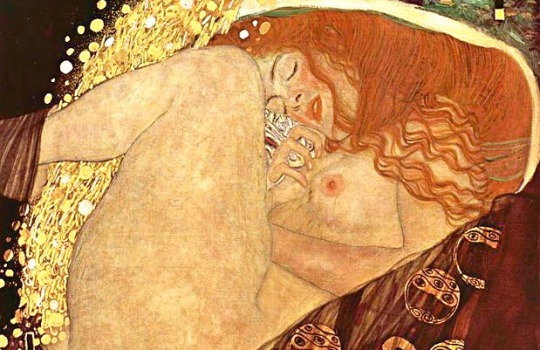
Gustav Klimt, Daphne, 1903
I will now share an excerpt of an article by Dominic Witek regarding the polarizing and deeply controversial artworks of Egon Schiele
"Created in the era of Freud, Schiele’s work can be seen as a metaphor for the psychoanalyst method of the talking cure where drawing is synonymous with speaking, revealing and releasing hopes and fears lodged in the unconscious."
Here, the author likens the work of Schiele to that of Rohini moon native Sigmund Freud.
"The broad spectrum of emotion depicted is expressed by Schiele’s various presentation of women. The different articulations of their bodies seems to convey a host of the artist’s attitudes, ranging from fear and distanced superiority, to admiration and desire for women. Indeed the artist’s relationships with women reflected these hopes and fears. He married Edith Harms, a respectable woman with whom he established a marriage based solely on friendship, continued an intimate relationship with Wally Neuzil despite attempting to end it before his marriage, and had an unusual relationship with his sister Gertrude.
[...] characterisations of the artist’s sister invite questioning on the nature of their relationship, which at least hints at the incestuous."
Brahma was condemned for incestuosly desiring his own daughter (creation) Rohini, which prompted her to adopt the form of a deer in Mrigashira to escape from her father.
"Egon was arrested in 1912 for suspected sexual harassment of underage girls. Despite this traumatic event (which he lamented extensively in his writings), he continued to depict very young women until his death.
His aesthetic mirrors Freudian attitudes in which sex is intimately related to death, the connection between the pleasure principle and the death drive, Eros and Thanatos. Freud articulated this tension in relation to women, defining the ‘castration complex’ as experiencing the fear of being castrated, while caught by an irrepressible sexual desire. Woman with Black Stockings, 1913, articulates this tension as a reclining woman lifts her skirt to reveal her sex"

It seems as though the threads of the unbridled pursuit of pleasure weave together the works, philosophies & artworks of rohini natives through the ages
To quote Jason Farago, "True morality, for Sade, entailed following your darkest and most destructive passions to their farthest possible ends, even at the expense of other human life.
To kill a man in passion was one thing, but to rationalise killing by law was barbarous.
“We rail against the passions,” [Sade] wrote, “but never think that it is from their flame that philosophy lights its torch.”
#rohini#rohini nakshatra#vedic astrology#venus#moon#taurus#sade & egon were monsters but the parallels are interesting#astrology
329 notes
·
View notes
Text

Dracula author Bram Stoker's long lost ghost story Gibbet Hill has been found in an 1890 Christmas supplement of a Dublin newspaper!
https://www.bbc.com/news/articles/c4g9119l64qo
~Kambriel
[Kambriel.com ~ Etsy ~ Bluesky~ Twitter ~ Tumblr ~ Dreamwidth ~ Facebook ~ Instagram]
#Gothic#Literature#Dracula#Bram Stoker#Gibbet Hill#Ghost Story#Haunted#Gothic Fiction#ghosts#Victorian#Gothic Victorian#Vampire
300 notes
·
View notes
Note
would you have any reading suggestions to learn more about the earrings are evil era??? I've never heard of that aspect of fashion history and I am curious
Oh man, it was wild
you saw the first stirrings of it in the 1890s, when you started to get (mostly white and middle-to-upper-class) proto-feminists arguing that ear piercing was barbaric- keep an eye on the racist undertones there; they will come up again-and forcing women to suffer for fashion. I cannot emphasize enough that, until that point, ear piercing had been pretty much normal for this race/class/gender group. For centuries. You see criticism of the practice here and there, but nothing that really stuck.
The objections slowly increased until roughly the mid-1920s, when everything reached a tipping point and pierced ears became largely taboo for most white Americans and Brits of northern/western European descent. If that sounds HIGHLY specific, it is- communities from southern and sometimes eastern Europe retained cultural practices of ear piercing, to the point where it was often used as a point against them by mainstream society. It was also associated with Latino people, Black people, and the Romani, which. Yeah. I don't need to tell you how that went down.
It also developed associations with sexual immorality and/or backwards thinking. One newspaper letter I read came from a teen girl in the 1940s, wondering why she shouldn't pierce her ears if her very respectable grandmother had piercings. The response was something like "well, they did all sorts of things in the Bad Old Days that we shouldn't do now." True in many ways, or course, but...piercing your ears? That's the hill culture decided to die on as far as antiquated behavior that we should leave behind? Apparently yes.
Earrings themselves never went out of style, which led to the birth of clip-ons and screwbacks. Ironic that the "don't surfer for fashion" crowd was so eager to embrace screwing tiny vices onto your ears, but there we are. My own mother (born 1953) remembers her mother (born 1926) always taking off her screwback earrings immediately after getting home from a party, literally in the foyer of their house the second the door shut. There had been adaptations for unpierced ears before- Little Women, published in 1868, describes Meg March hanging earrings from a flesh-colored silk ribbon tied around the base of her ear -but they'd never caught on like this before.
However, the pendulum was soon to swing back. After just 40 years of Piercing Panic, in the 1960s, girls began piercing their ears again in droves. As piercing moved from the slumber party or summer camp back to the professional jewelers whose families had been early professional piercers in the 19th century- and to befuddled doctors who had no idea what they were doing yet still received piercing requests -cultural commentators had no idea what to make of it. Some decried the new trend while most took an air of bemused neutrality. My personal favorite article expressed surprise that "Space Age misses" were adopting these "Victorian traditions."
(In 1965, my grandmother took Mom to the anesthesiologist down the street who was offering to pierce his young daughter's friends gratis, and got it done. My grandfather had strongly disapproved of the idea, but in the end it took him a week to notice the new earrings.)
As to sources...honestly, I've just gone to Google Books, specified a time frame, and typed in "ear piercing," "pierced ears," "pierce ears," etc. Tons of primary sources at your fingertips, though I'm not always great about documenting or saving what I find. There's not much written about it formally, I've found- no books or scholarly studies. It may just be too close in history to attract much academic attention, though I find it fascinating.
This little blip where something that's been normal for most of western history suddenly became taboo for a hot second.
Also my ear piercings just turned 20 five days ago, commemorating the date that I was taken with much ceremony to Piercing Pagoda (and that horrible gun; it's a wonder I didn't get keloids) to get me out from underfoot while the Thanksgiving feast was being made. Grandma got hers pierced on the same day, at age 78. Happy Birthday, Marzi's ear piercings!
199 notes
·
View notes
Text
writing fictional Wikipedia articles as outlines for my historical fiction characters and having so much fun. dude look at this:
Daniel Ivey Clairville (3 May 1856 - 5 December 1941) was a prominent figure in the field of animal husbandry, early adopter of germ theory, animal behaviorist, cattle drover, diarist and Quaker theologian. Born in Philadelphia, Clairville apprenticed as a farrier until the death of his father in 1871 caused him to relocate to Texas to seek employment along the Chisholm Trail. Clairville was known for his ability to slow and halt the spread of disease among cattle using sanitation methods he pioneered, reducing cattle loss by up to 60% in herds under his care.
After retiring from the cattle industry in the late 1890s, he attended Cornell University, becoming an adjunct professor at Elgin Polytechnic Institute and publishing several texts on bovine husbandry and behavior.
Clairville was a relatively obscure scientific figure before his private writings about his sexuality, faith and experiences in the waning days of the Wild West were published posthumously.
^ Personal life
Clairville was gay and in a committed relationship with Joseph “Shortie” Alcott (14 November 1860 - 17 July 1906) until the latter’s mysterious death in Texas. Alcott was a train robber, outlaw, gambler, duelist and suspected serial killer. The couple met in the mid-1880s after Alcott was released from Utah Territorial Penitentiary and joined a trail drive lead by Clairville. Their relationship was described as inseparable but contentious by John Matthew Robertson-Clairville, Clairville’s adopted son, who often wrote about the couple’s relationship in his trail diary.
Having worked side by side for over a decade, Alcott initially followed Clairville east when he retired from the cattle industry in the 1890s but became embroiled in legal trouble in Pennsylvania and returned to Texas where he embarked on a crime spree that ended in a fatal two day shootout with a number of Texas rangers.
The details of Clairville’s private life and his connection to notorious criminal Shortie Alcott were largely forgotten until the 1970s when a box of personal letters and diaries was discovered in the attic of his former residence. The diaries of Clairville and Robertson-Clairville along with the correspondence between Clairville and Alcott in the latter’s final months form the basis of the book published by his great granddaughter in 1996.
Analysis of his writings and first hand accounts of his behavior suggest he had autism and OCD.
127 notes
·
View notes
Text
Science Museum Group changed offensive object tittle after getting my letter
here's the story about it:
Wonderful @solariium commissioned me wonderful victorian-era wheelchair user character to draw. Refs were provided, and one of the links was an object in online museum gallery - vintage wheelchair.
solariium, who is wheelchair user theirself, mentioned that tittle of the object is incorrect but it was good picture for the ref. i wondered "what's with the tittle?" looked in the link and saw

ID: screenshot of online museum collection, vintage old wheelchai object page. the tittle of wheelchair says: Invalid chair, Europe, 1850-1890. end ID
welp. incorrect indeed! [i* is outdated offensive term]
so i decided to make a special move

ID: my drawing of a character from anime "mob psycho 100" - Arataka Reigen. He holds a phone next to his ear, his face epression is very confident. It's all anime sparkles lights effects around him and text "REIGEN SPECIAL MOVE". end ID
and USE MY POWER
of writing emails
i don't have problems with writing emails, so i thought why not
and
https://collection.sciencemuseumgroup.org.uk/objects/co120657/carved-wooden-wheelchair-europe-1850-1890-invalid-chair
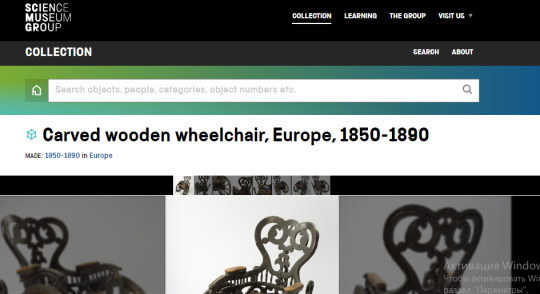
ID: screenshot of online museum collection, vintage old wheelchai object page. the tittle of wheelchair says: Carved wooden wheelchair, Europe, 1850-1890. end ID
it worked!
As human who made bunch of projects, i can say that keeping museum gallery is tone of work.
And tittle change - no, it's not just changing few letters.
Changing tittle of object in museum is similar to changing name of game file. Catalogs changes, maybe they have irl gallery, so new card, they probably have some code objects system related to tittles, and scientists, students, make reference to this object in their researches and articles and etc etc.
So, yeah, it * is * a lot of work. Also, they changed description, it now says that this object was "historically referred to as ‘invalid chair’". And i think it's good, because it is not erasing fact of people used this word, and it's addition to the progress context - we literally see now old term clarified as past, and new one, now, in the tittle.
(and yes, web link. i just saw that i* word still there. yeah, not perfect but still, considering things i said above - big work done)
I used some conversation strategy in case "this is offensive can you fix" will not be enough — started on positive attitude giving compliment on their collection being big and interesting, gave them extra argument on why this should be fixed (more actual search key words on this now are "vintage wheelchair", not "i* chair"). Then we had a little letters chain, where they answered politely too, and in about few days i got detailed answer on this, and yep, changed tittle.
And i think this shows, that if someone did mistake and someone noticed it and giving feedback on it, if both sides are interested in progress and making good changes, no matter how hard it is, sides can make a change, working together and being kind. And i think we should be more brave about making such connections!
Thanks again to @solariium and museum workers!
#small big changes#wheelchair#activism#i was writing this post in drafts for a month or smth like it's my diploma work#described
241 notes
·
View notes
Photo
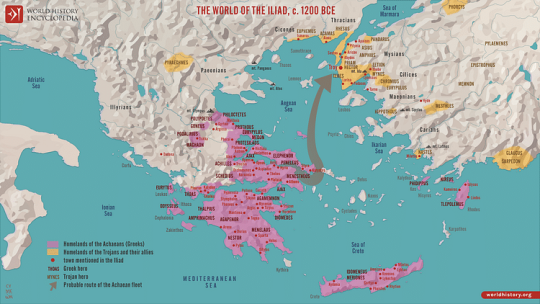
Discovery of Troy
In his epic poems, the Iliad and the Odyssey, the Greek poet Homer (c. 750 BCE) told the story of the Trojan War, a ten-year siege of the city of Troy by an alliance of Greek city-states. Troy was also known by its Latinised name of Ilium and was located on the northwest coast of Anatolia (modern-day Turkey).
The city was continuously inhabited from the Early Bronze Age (c. 3000-2200 BCE) for around 4,000 years until two major earthquakes destroyed Troy in 1300 CE, and it fell into decline. Archaeological finds suggest that a small Byzantine community lived at Troy in the 12th century CE, but the powerful kingdom of Homer's epics was lost to history, although it remained in the popular imagination.
In the 19th century, Hisarlik was widely believed to be the site of ancient Troy. Its location on a hill near Tevfikiye in the Dardanelles, which connects the Aegean to the Black Sea, was a strategically important position because it commanded a major trading route. Archaeologists started to excavate the strata or layers of the different settlements, which, over time, had formed a mound or tell 20 m (65 ft) in height, and these layers are labelled Troy I to Troy IX. To date, nine cities and 46 levels of occupation have been unearthed, showing that there was no single Troy but a succession of civilisations that occupied the area.
Whether the Trojan War was a Late Bronze Age (c. 1700-1000 BCE) historical event or merely Greek mythology remains the subject of scholarly debate, but the city of Homer's Iliad is generally accepted to have been found and is associated with three famous archaeologists: Heinrich Schliemann, Wilhelm Dörpfeld, and Carl Blegen.
Heinrich Schliemann: Finding & Almost Losing Troy
Johann Ludwig Heinrich Julius Schliemann (1822-1890) achieved worldwide fame in 1873 when he claimed to have discovered Troy. Schliemann was a German businessman and a pioneer archaeologist (although untrained) who was fascinated by the idea of Troy after seeing a picture of the city burning in a book entitled Weltgeschichte für Kinder ("World History for Children") when he was seven years old.
The son of an impoverished Lutheran pastor and the fifth of seven children, Schliemann was an extraordinarily gifted linguist who spoke more than 15 languages and started travelling at an early age. He wanted to emigrate to South America and took a position as a cabin boy on board a vessel bound for La Guajira, Colombia, that was wrecked off the Dutch coast in 1841. He stayed in Amsterdam and worked as a bookkeeper for a city merchant, learning French, Dutch, and English – the main trading languages.
In 1846, Heinrich Schliemann became an agent for the German trading house B. H. Schröder & Co. and was sent to Saint Petersburg because he was the only Russian-speaking employee. This was the start of Schliemann's accumulation of his fortune, trading in indigo dye and saltpetre before arriving in California in 1851 and turning a multimillion-dollar profit during the Gold Rush.
Heinrich Schliemann retired in 1858 at the age of 36, having returned to Europe and marrying his first wife, Russian-born Ekaterina Petrovna Lyschin (1826-1896). He spent his time touring classical archaeology sites, and in 1868, Schliemann met Frank Calvert (1828-1908), a British expatriate diplomat whose Levantine English family owned land in Hisarlik, which included the eastern half of the Hisarlik mound (the western half belonged to the Turkish government).
Calvert studied the site, excavated trenches, and was convinced he had found Homeric Troy, but he lacked the finances to conduct further digging seasons. Calvert invited Schliemann to dinner, recognising that the German businessman was backed by an enormous fortune and a fierce determination to find Troy. The two men embarked on a partnership, and Heinrich Schliemann began excavations in 1870, bringing along his much younger second wife, Greek-born Sophia Engastromenou (1852-1932), whom he married in 1869 after divorcing Ekaterina.
Schliemann's excavation methods have been called into question. Employing 80 to 160 unskilled workers daily, Schliemann and his team dug a 14 m (45 ft) trench through the centre of the tell, tossing aside earth and building rubble from layers he considered too late in time to be Troy. Schliemann assumed the lowest layer (Troy 1) was the city of Troy, so destroying the 'real Troy' that was later identified in the upper layers. Pickaxes, shovels, and dynamite were used, and the site was very nearly destroyed, leading many professional scholars to accuse Heinrich Schliemann of being more a treasure hunter than an archaeologist. Kenneth Harl, a classical scholar, said in his Asia Minor lecture series that Schliemann did what the Greeks could not: razed the city walls.
In May 1873, Schliemann claimed to have discovered "Priam's treasure," a hoard of gold, valuable artefacts, and jewellery, including the famed golden diadem (royal headdress) worn by his wife, Sophia, in a photograph taken in 1874. Schliemann equated Priam's Treasure with the riches mentioned in Book 24 of the Iliad. Priam's Treasure was found in Troy II – a layer showing evidence of fire – but Priam would have been the king of Troy during the time of Troy VI (1750-1300 BCE) or Troy VIIa (c. 1300-1180 BCE).
Controversy focused on Schliemann's diaries of the dig, which were incomplete. He also misidentified artefacts, and the dates when some of his discoveries were unearthed are vague. This led to accusations, among them being that Heinrich Schliemann did not tell the truth and combined his findings with artefacts found elsewhere on the site. Schliemann habitually drew any object he found, but Priam's Treasure was photographed instead, and not one of the artefacts was mentioned in early documentation. Did Schliemann's single-minded pursuit of legendary Troy lead him to falsify his discoveries? This is a question that has been asked ever since, and it was not helped by Schliemann later admitting that he had sensationalised the account of his wife, Sophia, being present when Priam's Treasure was found. She was, in fact, in Athens with her family following the death of her father.
Schliemann then smuggled Priam's Treasure (around 8,000 objects) out of Turkey. Most of the collection went to the Neues Museum in Berlin, and during World War II (1939-1945), it was hidden beneath the Berlin Zoo. Soviet soldiers discovered the bounty, and it was taken to Moscow and displayed at the Pushkin State Museum of Fine Arts, where the majority of the artefacts are still held. Priam's Treasure has been dated to 2200 BCE or earlier, and this is 1,000 years older than Homeric Troy. Schliemann also crated up pottery, gold jewellery, bronze kettles, and figurines and shipped them to Europe or sold artefacts to private collectors.
In 1876, the Turkish government brought a lawsuit against Schliemann, who promptly left the country and headed to Greece, where he began excavations at Mycenae. Here he discovered the Greek Bronze Age "Mask of Agamemnon," the gold leaf funeral mask of the famous king of ancient Mycenae who led the Greek army in the Trojan War of Homer's Iliad. This find has also met with controversy, with some critics accusing Schliemann of having the mask forged. Modern archaeological research suggests that the separated eyebrows of the mythological king of Mycenae are stylistically different from other death masks found at the site.
Nevertheless, Heinrich Schliemann became an international celebrity, spending over 20 years and seven digging seasons at Troy, deepening and widening what is known as Schliemann's Trench and destroying valuable material in the process. He never credited Frank Calvert, who perhaps may be considered the true discoverer of Homeric Troy.
Although Schliemann's archaeological methods were often brutal, he is considered the founder of modern field archaeology, but it took the work of another archaeologist, one who pioneered stratigraphic excavation, to shift Schliemann's focus from the lower to the upper layers of Troy.
Continue reading...
60 notes
·
View notes
Text
James Fitzjames and the Island of Bird Shit: historical connections/references in AMC's the Terror, and what that might say about JFJ's character
finally had time to write this up; below the cut is a brief introductory discussion of historical happenings re: guano trade. by no means am i a historian or an expert, but its a topic that's highly important to me especially when trying to understand a character like james fitzjames. Just a head's up-- it's pretty damning, and continues to add layers to his character, especially what his arc has to say about imperialism.
So let's begin-- key here will be the phrase:

First, a few sources that serve as a good introduction to the topic. Below, I've bullet-pointed the most important aspects of the articles (at least, as they relate to this meta).
Key points/areas:
WTF is guano: it is poop. "Guano islands" are small islands that are inhabited by bats & birds, esp. for breeding, and are mostly found off the coast of Peru. they are (or were) giant piles of poop. literally the size of mountains. Andean people harvested guano from these islands for a long time-- at least 1,500 to 5,000 years before colonization.
The guano age (1802-1884): note that the 'discovery' of guano by westerners happened sometime in the 1500s, and that its popularity as a fertilizer (and material for gunpowder) didn't hit until the 1800s (and 1870's for the gunpowder?). this caused a farming boom across the united states and europe, and a massive demand to extract it via mining. this extraction was done in the most evil and foul way possible, of course, because of capitalism, racism, and colonial imperialism.
Guano was such a powerful trading tool and moneymaker that the USA (and other countries too, I think) passed laws that encouraged citizens to claim any guano island they came across (hypothetically, these islands had to be 'unclaimed' by other governments, but, y'know how those things tend to go & who the USA deigns to recognize as a government). I believe that the USA still claims ownership of at least 10 islands (many in dispute), and the Guano Act also ensured that it was 'legal' for the USA to hold lands without declaring them as part of the USA, all while taking resources, enacting &enforcing laws, allowing the US military to operate on these places-- without the benefits of statehood & representation for the people who live there. This was the act that created an excuse for continued colonialism and theft, all in the name of money & literal shit. (no hate to the birds & their poop, though! I <3 ecology). also fuck the supreme court they were the ones that really solidified this into law with the case Jones V United States (1890), which was about a labor revolt where the workers (black) killed their overseers (white). they added bricks to the foundation of USA as Empire
Imperialism & colonialism, displacement & colonialism, Slavery-- all of these were things that happened in lockstep with the guano trade. It was horrible. Details about it can be found in 1493 by Charles C Mann
Working Conditions, slavery, exploitation of chinese immigrants & hawaiians, exploitation of black american immigrants-- almost all of these people were tricked into signing false job contracts, then kidnapped and brought to the islands by force where they would endure unimaginable working conditions until they were worked literally to death. please recall the context of the opium wars, as well (1839-1860), which happened during the same time frame, and which JFJ participated in.
Ecological importance & links to unsustainable farming practices that are causing climate crises / pollution / loss of topsoil (beginnings of over-reliance of fertilizers, which stress soils and cause microbial problems when misused-- which is all the damn time, because massive monoculture capitalistic farms don't care (and frequently the farmers themselves can't afford to care due to bottlenecks in the packing market!) about maintaining their soil. that's a whole other can of worms though and is worthy of another post.) nothing to do with JFJ tho. Important to note that the ecology of these islands has been destroyed for mining, like almost every known mine industry in history. extraction has a really, really high cost, and that cost is foisted onto the people who are being exploited by richer nations. please remember that this pattern still happens today, and that the overconsumption and lavish lifestyles of the global north are directly to blame for the climate crisis that's causing untold misery in the global south. <- this part isnt in the articles, btw, and if you want a more thorough discussion on this i'm happy to recommend some places to start. i fucking hate US empire and the 'conveniences' of consumerism. ouuughhhh mad now. if youre in the global north please stop ordering packages from amazon and fight for public transportation near you. im begging. like obvs theres much to be done but those things are simple and easy places to start. unhook yourself from the 'joy' of 'purchase'. p l e a s e. p l e a s e. OK. back 2 post
Historical connections to the irish potato famine (the andean potato blight hitched a ride to britain in a shipment of guano, kickstarting the famine [which was then intentionally exacerbated by the english])-- how does this impact JFJ's relationship with Francis?
It's important to note that these mines are still active, though the labor conditions have improved since their inception (i havent done much research into the labor conditions currently, so keep in mind that 'improved' might not actually mean that the quality of worklife for miners is acceptable or humane!). I think Peru is the place with the most well known guano industry, and it's still one of their exports.
TLDR: 1. guano became popular as a fertilizer in the USA/europe. 2. this caused massive demand for guano mining and mine expansion, including voracious demand for workers. 3. slaves, prisoners, and immigrants were all forced to work in horrible conditions mostly to death to fill ships with mountains of unprocessed shit. 4. This guano also was a vector for the potato blight which started the Irish Potato Famine. 5. i love birds & bats and im so fucking mad that guano was used to create bad farming practices that destroys our soil
If you'd like to read a more detailed discussion of the guano trade and its impact on people, I strongly recommend checking out 1493 by Charles C. Mann -- very user friendly and good for people who don't enjoy super dry history (like me). i'm sure theres other great resources about this as well.
Okay, so now that's out of the way. You too, reader, have at least some idea of the broad horrors of the guano trade. So what's that to do with Mr. James Fitzjames?
Let's take a look at this picture again. I think it says all we need:

most importantly, this line specifically links James Fitzjames to an island covered in bird shit. this is absolutely a reference to the guano trade, which occurred beforehand and in parallel to the franklin expedition.
the next question is: in what way is JFJ linked to the guano trade? was he an overseer there? was he 'just passing by?' Did he act as part of a military enforcing terrible labor conditions? We don't really know and can't say anything conclusively as far as show!JFJ, but the implications are not great.
obviously crozier bringing this up serves to shut the conversation down. nobody likes that he makes this comment; it's reminding them of something distasteful. jfj never expands on this point about 'birdshit island'-- honestly, i suspect it's something he's got a great deal of negative feelings about. i'd read it as guilt, but im not a great person to ask because i have a really hard time being objective about JFJ (he's one of the people from the show that I'd most like to hit with a car)
Please note that one of the populations of folks being kidnapped and worked to death were Chinese people. taken in the context of the rest of that conversation, where JFJ brags and laughs about setting chinese people on fire , it's uh-- well, it really, really emphasizes just how much harm JFJ does to chinese people specifically. And sure, we don't have confirmation about what exactly he was doing on 'birdshit island'-- but if it's something he's bragged about before / told stories about before, I don;t think it was anything good, considering what he enjoys telling stories about. especially since the Navy is used to enforce authority on people and as a tool of oppression.
Fascinating to note that the trade of guano is intricately linked to the irish potato famines, as the guano both enabled the monoculture farming practice and acted as the vector from which the potato blight spread. Francis is Irish!! this is just such an interesting detail!!!
In conclusion, there's nothing really definitive that we can say about what exactly JFJ was doing at the islands-- except that it probably wasn't a good thing. i do think we can safely read that he was involved in the industry somehow, which is pretty fucking damning in terms of his own ethics (or lack thereof) and how much he embraced english imperialism. it's one of those tiny details that has so much to say when you peel the layers back, and i wanted to bring some attention to it, because i haven't seen anyone talking about this before.

also, i *just* noticed this, but slipping the word capital in there is so so fucking slick. right on the money, we could say. three big cheers for the people who wrote and performed the Terror, because holy shit is it so good
EDIT: there's some additional discussion in the replies section of this post that's critical-- it seems like JFJ was (peripherally?) involved in the guano trade in Africa, *not* Peru, which changes things forsure. bird shit island how you intrigue me....
#the terror#the terror amc#james fitzjames#the terror meta#pomodoriwhines#anyway feel free to add on to this if you’ d like to continue the discussion!!!#there is much to say on this for sure!!#thought it would take waaaay longer to weite this up but i went into a fugue state lol#hope i didnt make any silly errors lol 😭
65 notes
·
View notes
Text
"The knife is a weapon of the Other"
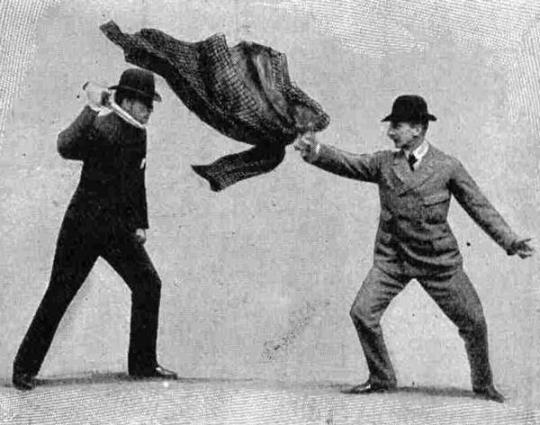
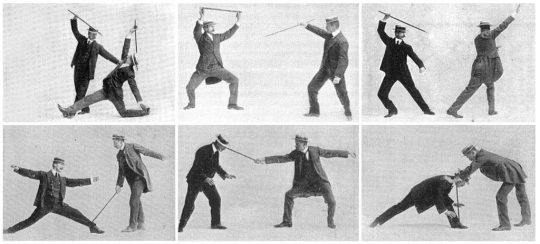
"The emerging martial art of Bartitsu, appearing in middle-class magazines during the Boer War, was the encapsulation of British civilian gallantry. Yet Bartitsu would have slid into obscurity had it not been for its curious appearance in the Sherlock Holmes canon. The final showdown of the ‘duel’ between Holmes and Moriarty is a wrestling match between two Victorian masterminds. When Holmes returns to London he tells Watson that he and Moriarty went to battle at the Reichenbach Falls unarmed. Holmes managed to ‘slip through’ Moriarty’s grip as he possessed ‘some knowledge’ of ‘baritsu, or the Japanese system of wrestling’, adding that the art had on occasion been useful to him.
Founded in the 1890s by an Anglo-Scottish engineer, Edward William Barton-Wright (1860–1951), Bartitsu was a synthesis of British boxing, French la savate (kickboxing) and Japanese jujitsu. Barton-Wright tapped into the need for a bourgeois form of self-defence, something which he could promote as being British and yet was also exotic and refined.
The principal aim of Bartitsu’s promoters was ‘to provide a means whereby the higher classes of society may protect themselves from the attacks of hooligans and their like all over the world’. These urban gangs were a new form of folk devil, descendants of the mid-Victorian-era garotter. While they were armed with clubs, knuckles, iron bars and leather belts, it is doubtful that they carried firearms. Nevertheless, the press did represent the hooligan as a threatening presence.
Perhaps the scares promoted the growth of a burgeoning culture of ‘British’ self-defence which avoided the aggressive and increasingly unmanly action of using a firearm against a ruffianly lower-class opponent equipped only with basic weapons.
Barton-Wright follows a literary tradition when he presents his martial art as a British form of self-defence. Pierce Egan’s well-known self-defence manual was supplemented with a word on the ‘Englishness’ of physical heroism, arguing that ‘Englishmen need no other weapons in personal contests than those which nature has so amply supplied them with’. In 1910 the former lightweight boxing champion Andrew J. Newton said in his manual Boxing that ‘the native of Southern Europe flies to his knife’, whereas the ‘Britisher […] is handy with his fists in an emergency’. Elsewhere it was maintained that the ‘Italian, Greek, Portuguese, or South American’ ‘give preference to the knife’ while the Englishman extols boxing. For Barton-Wright, British boxers ‘scorn taking advantages of another man when he is down’, while a foreigner might ‘use a chair, or a beer bottle, or a knife’ or, ‘when a weapon is available’, he might employ ‘underhanded means’. The views of these articles reappear in a later self-defence manual of 1914, where it is argued that Britons ‘live in a country where knife and revolver are not much in evidence’. This statement about the low number of firearms and edged weapons can be read as an attempt to extol British virtues and is not necessarily representative of reality. The knife is a weapon of the Other. Barton-Wright’s view that English practitioners of Bartitsu are principled men is reflected in the Sherlock Holmes canon, where Holmes never uses a knife, although his enemies, whether foreign or British, do so at times."
— Emelyne Godfrey, Masculinity, Crime and Self-Defence in Victorian Literature (Palgrave Macmillan, 2013) (very abridged)


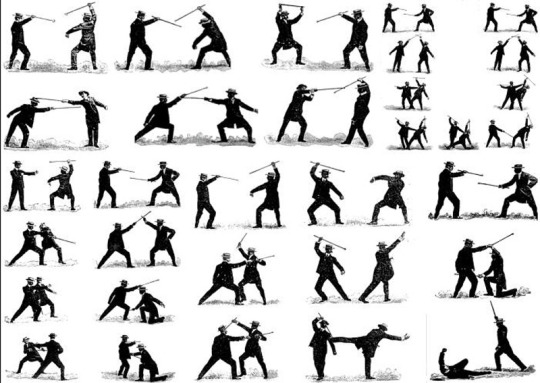
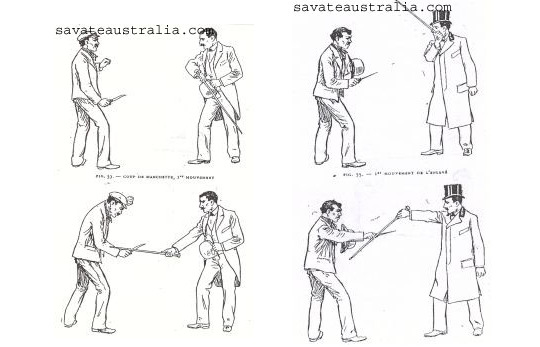

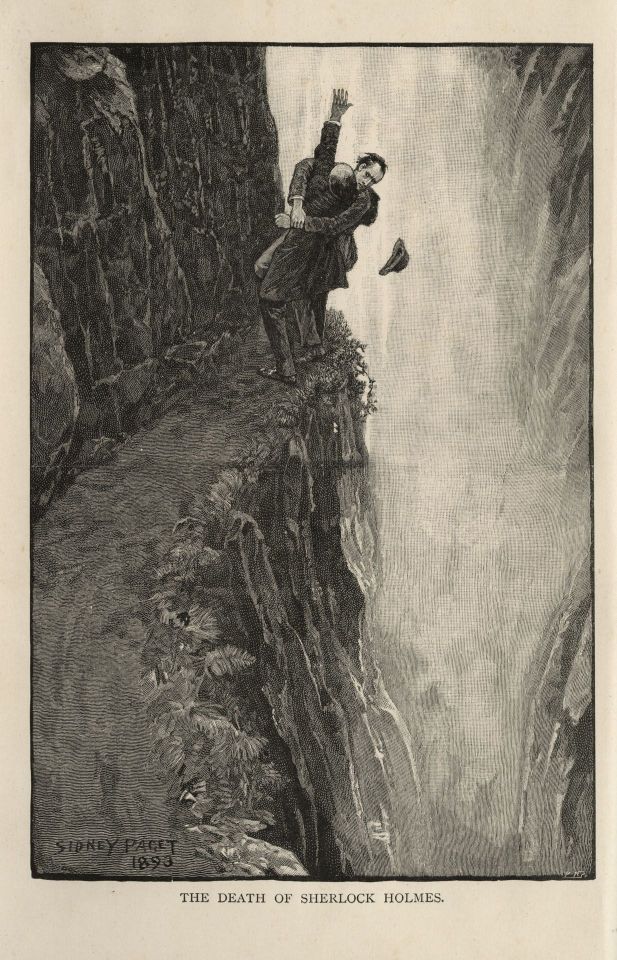
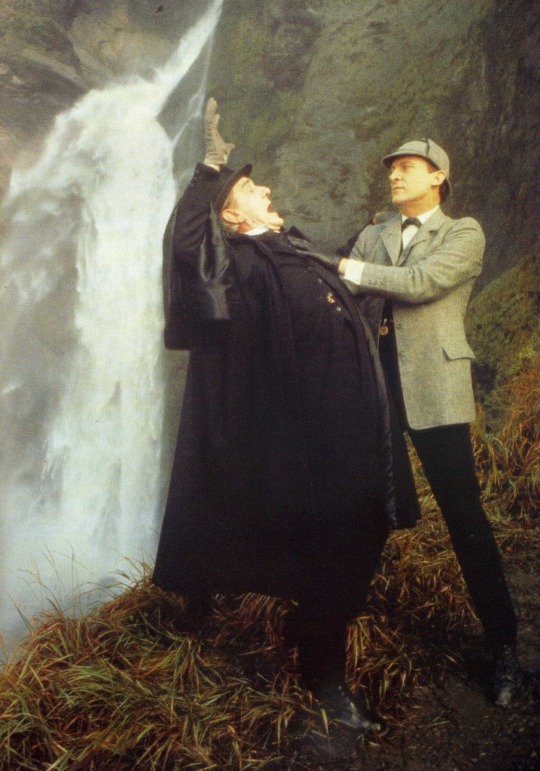
#Masculinity Crime and Self-Defence in Victorian Literature#Emelyne Godfrey#theory#how to stab#sherlock holmes#arthur conan doyle#bartitsu#rogues in fiction#moral panics#dishonour on your cow
624 notes
·
View notes